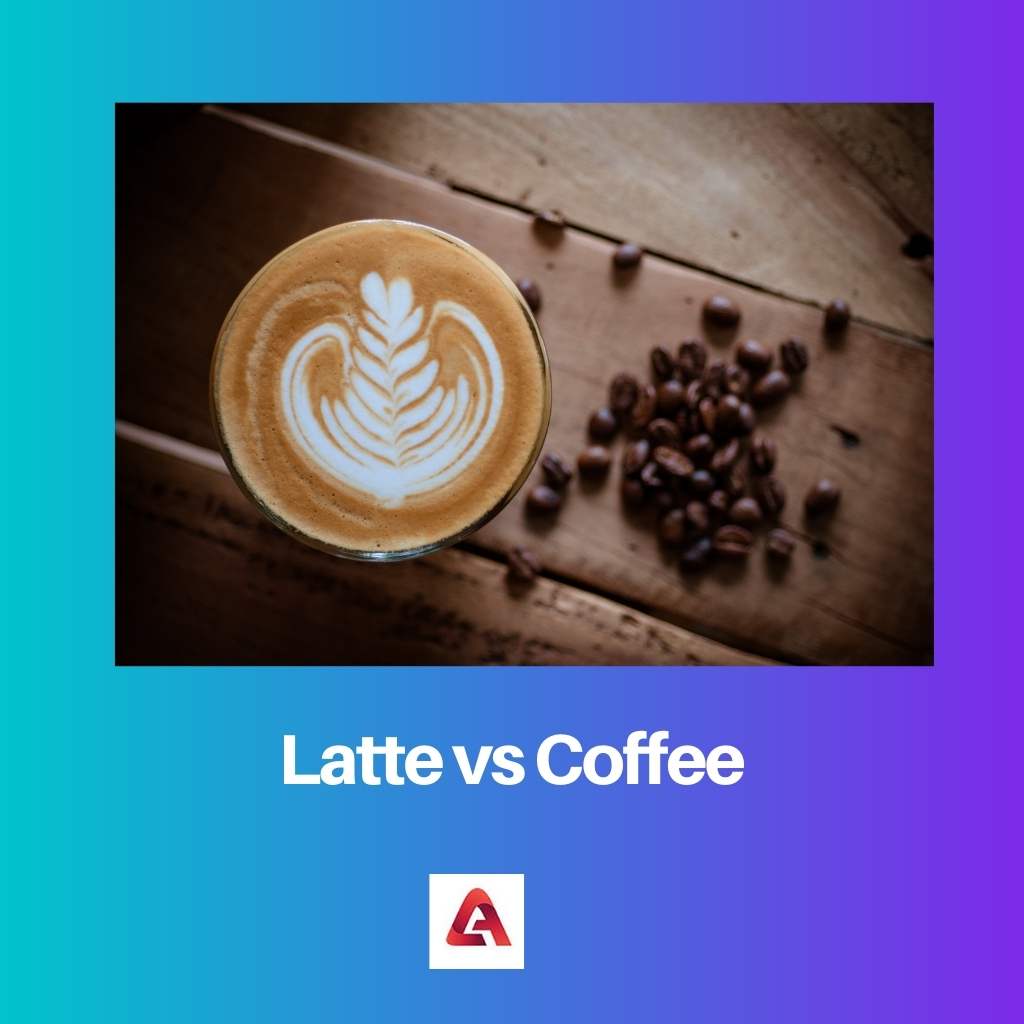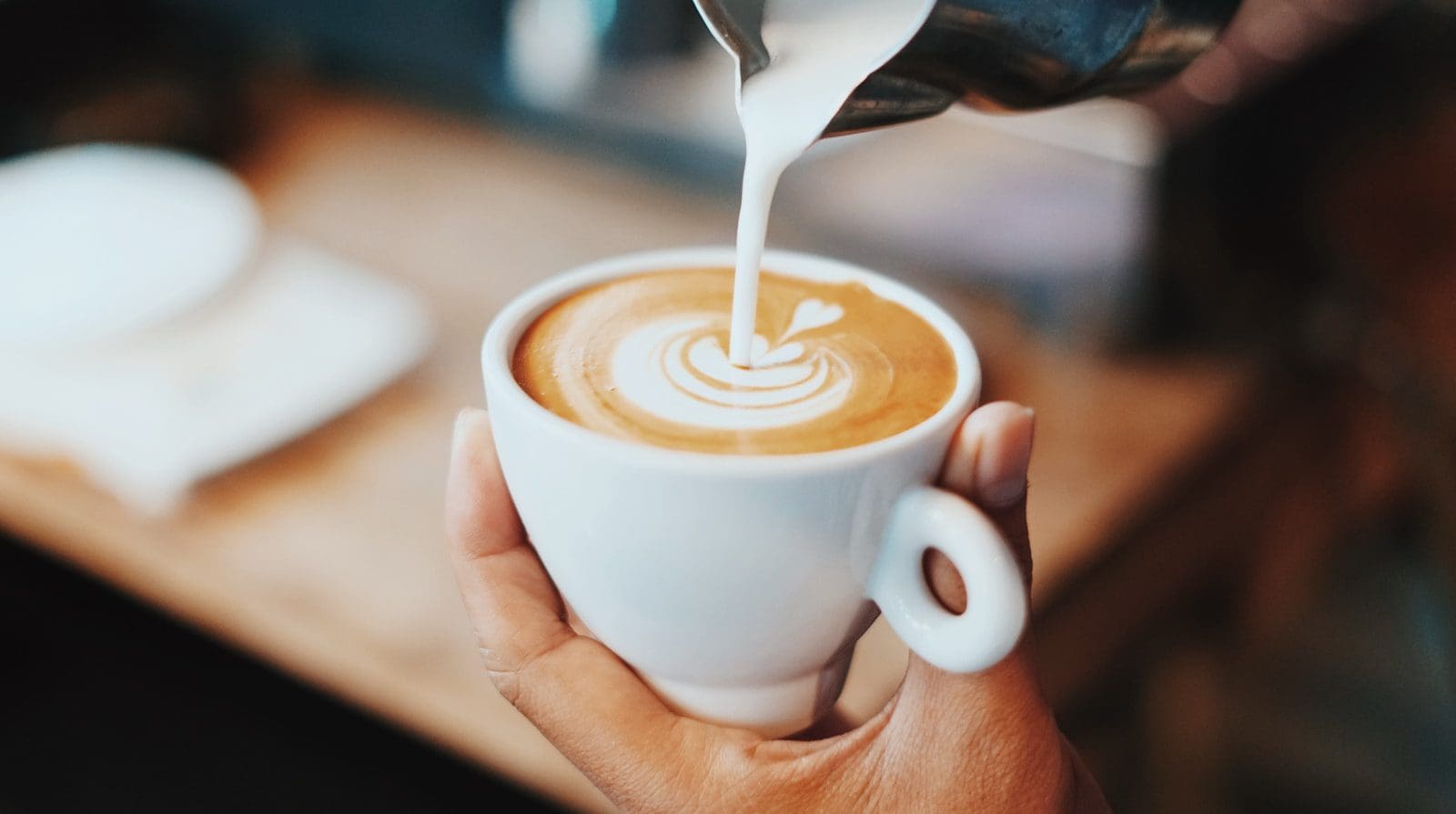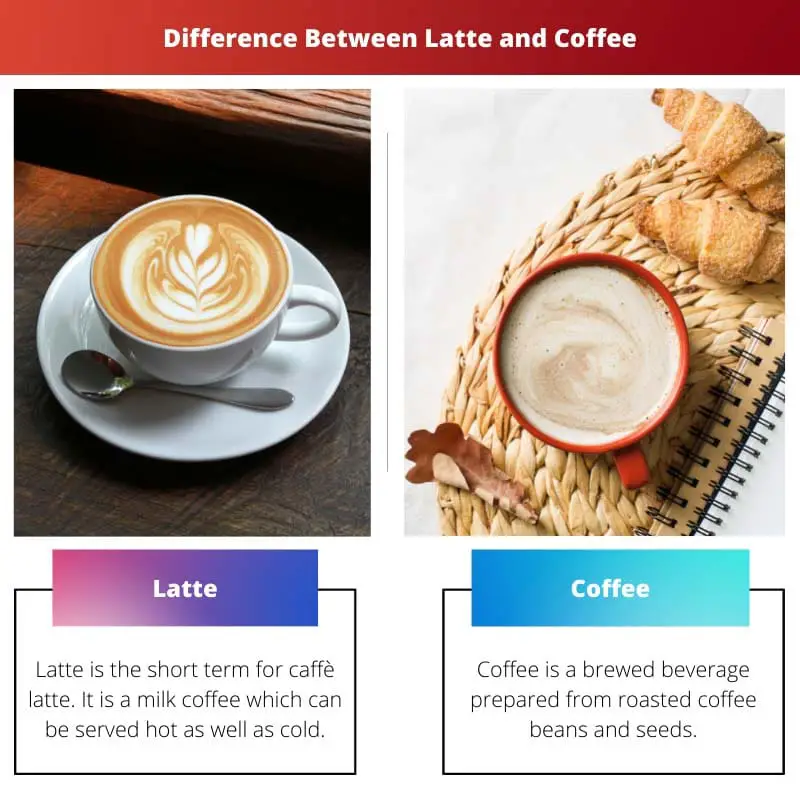Latte and coffee are the most common type of brewed beverages across the globe. The industry of latte and coffee has skyrocketed to billions of dollars.
Key Takeaways
- Lattes combine espresso shots with steamed milk, resulting in a creamier texture.
- Regular coffee has a stronger taste due to higher coffee-to-water ratios.
- Lattes contain less caffeine than regular coffee, as they use less coffee in their preparation.
Latte vs Coffee
Latte is a milk coffee that originates from Italy and can be served hot or cold and comes in different flavours. It is the shortened term for a caffe latte. Coffee is a beverage that is made with roasted coffee beans and seeds and contains caffeine which can stimulate the human brain.

Latte word was first used in an English essay called ‘Italian Journeys’ in 1867. Latte is a creamier version of coffee. It is not as strong as regular coffee.
While coffee was a popular part of the Sufi shrines in the 15th century, coffee is less creamy than a latte. It is stronger than a latte and has proven to act as a stimulant.
Comparison Table
| Parameters of comparison | Latte | Coffee |
|---|---|---|
| Origin | Italy | Africa and South Arabia |
| Word derivation | Derived from an Italian word ‘Caffe latte’ which means coffee and milk | Derived from the Dutch word ‘koffie’ which is a borrowed word from Turkish ‘kahve’ and Arabic ‘qahwa’ |
| Preparation methods | By taking a standard shot of espresso and filling it with steamed milk and a layer of foam milk on top, which can be approximately 12 mm thick | By adding hot water to the ground and roasted beans and milk (optional) |
| Variants | Latte is available in various variants and flavors like vanilla, caramel, mocha, pumpkin spice, hazelnut, coconut, lavender, mate, and others | Espresso, instant, latte, brewed, filtered, decaf brewed, and plunger |
| Effect on health | Releases stress hormones like epinephrine, cortisol, glucocorticoids, norepinephrine which also accelerate aging | The caffeine acts as a stimulant, relaxes air passages of asthmatic patients, and also reduces the risk of Parkinson’s disease. |
What is Latte?
Latte is the short term for caffè latte. It is a milk coffee which can be served hot as well as cold. It originated in Italy. The word is derived from the Italian word ‘Caffe latte’, which means coffee and milk.
The various flavours of latte are chocolate-flavoured mocha, masala chai (Indian), matcha, mate, rooibos, or variation in milk like almond milk or soy milk.
Latte is prepared in a glass of a standard shot of espresso, which is filled with steamed milk and a layer of foam milk on top, which can be approximately 12 mm thick. Latte is confused with a cappuccino, but cappuccino has a thicker milk foam.
There are various styles of serving lattes in different parts of the world. Like in Scandinavia, it is served in a bowl, while in Southeast

What is Coffee?
Coffee is a brewed beverage prepared from roasted coffee beans and seeds. It has caffeine content which has the potential to act as a stimulant to the human brain.
To turn the seeds into a consumable product, the seeds are separated from the coffee fruit. The raw green coffee seeds are then roasted and later ground into a powder form.
Back in the 16th century, coffee beans were smuggled to the Indian subcontinent from the Middle East and planted in Mysore. The Dutch East India Company was the first company to import coffee worldwide on a huge scale.
Coffee grows well between the tropics of Cancer and Capricorn and is known as the bean belt. It is planted at the beginning of the rainy season. It is also intercropped between beans, rice, and corn.

Main Differences Between Latte and Coffee
- Coffee has originated in Africa and South Arabia, while latte has originated in Italy.
- Coffee was first consumed in the 15th century in the Sufi shrines in Yemen, while the latte is a popular part of European cuisine since the 17th century.






The distinctively in-depth coverage and comparative analysis of latte and coffee make this article a commendable and informative read.
I couldn’t agree more. It’s an enriching and fascinating post.
This article gives a wide array of facts and details about the history, preparation and difference between latte and coffee, which gives readers a complete understanding of the topic. The references cited support the credibility of this content
The comparison table is very useful. This has provided a significant amount of information to me that I previously didn’t know.
I totally agree with you. The details presented are profound and very informative.
The breakdown of the key takeaways and the comparison table gives a complete picture of the differences between latte and coffee. It allows the readers to understand the topic easily.
This is a very well-structured post, and I find the contrast between informative facts and laid-back conversational style quite impressive.
Agreed, the post is easy to read, and the material is well presented.
Interesting to note the historical background and key differences between latte and coffee. The content is very educative and provides great insights.
I think the detailed explanation and the use of credible references in the context are commendable, making the article a great source of knowledge about latte and coffee.
This is an excellent read. I appreciate the comprehensive and informative nature of this content.
Certainly, the information presented in this post is valuable and substantial.
The article effectively highlights the differences between latte and coffee and provides in-depth knowledge on their origins and preparation methods. It’s a must-read for coffee enthusiasts.
Absolutely, this article is an asset for anyone interested in understanding the nuances of coffee and latte.
The detailed comparison is quite captivating. The historical references are intriguing as well.
I find this a great source to learning more about latte and coffee. It provides valuable and interesting information.
Indeed, the article is very informative and thought-provoking.
Absolutely. The content is comprehensive and well-researched, offering a holistic view of the differences between latte and coffee.
The post highlights a plethora of useful and important details regarding latte and coffee, making it a valuable and educative resource for readers.
Absolutely! I appreciate the depth of information provided. It’s thoughtfully curated and informative.